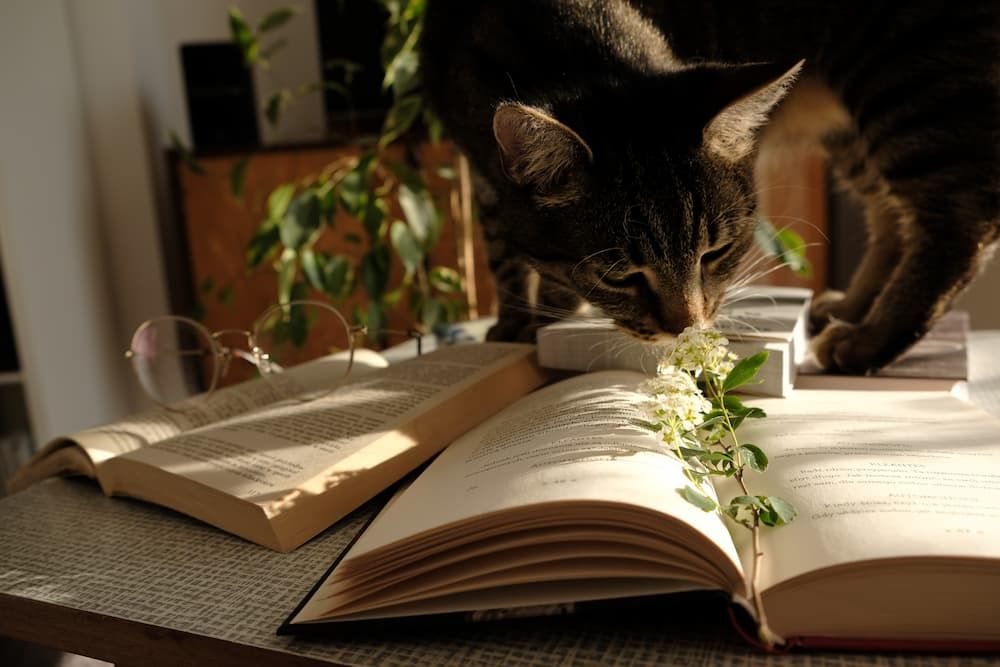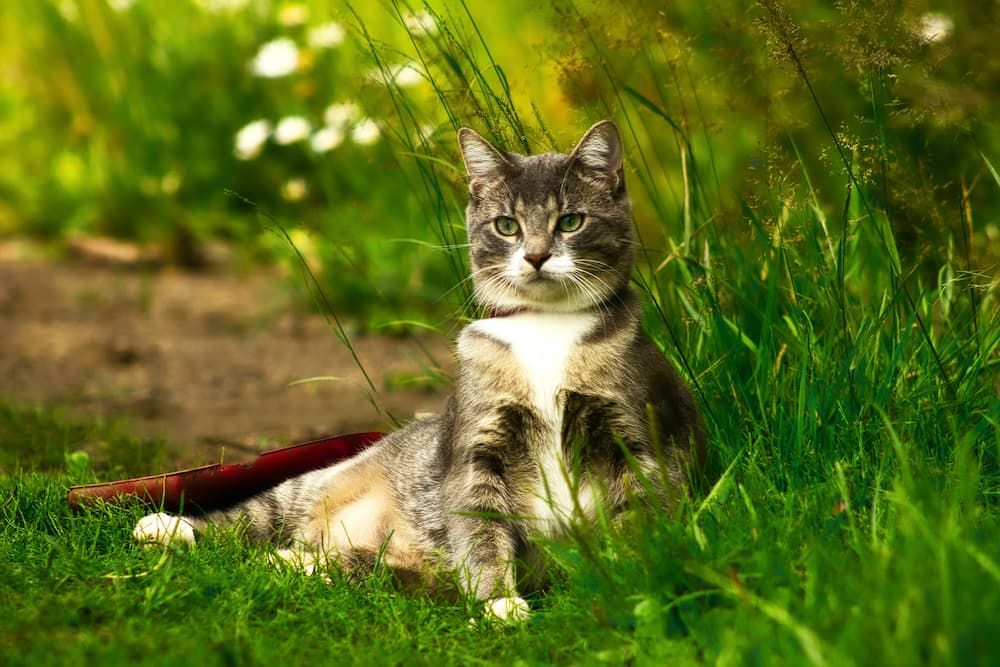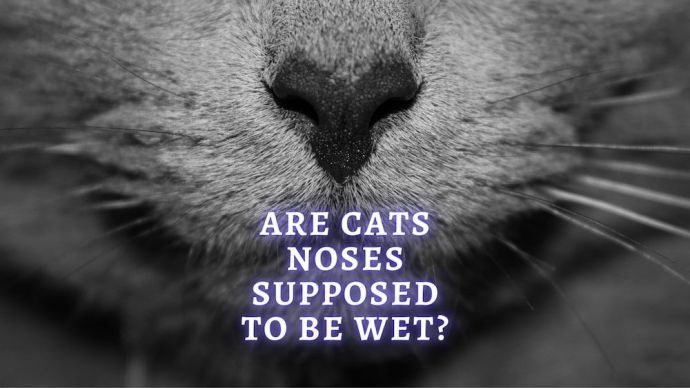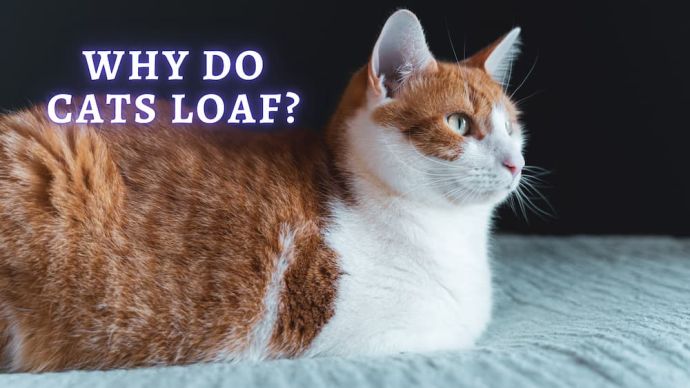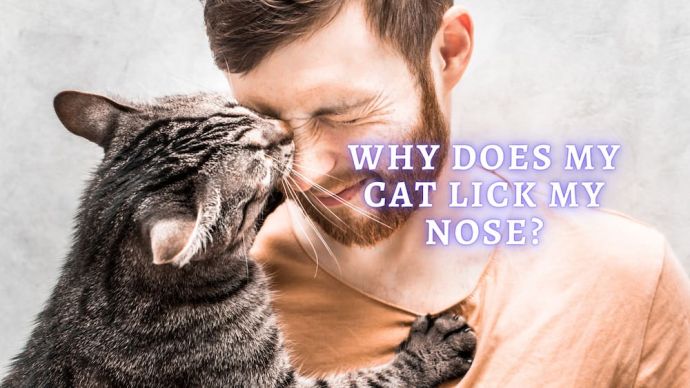How to Keep Cats out of Plants? How to Get Your Cat to Not Eat Plants?
Written by:
Author: Vicki Smirnova
Vicki Smirnova is a professional writer and editor who adores animals and helps readers get along well with their pets. She has been working in digital media for more than 5 years and has great experience writing content about lifestyle, including pets. Vicki specializes in dog health and nutrition, cat feeding, dog training. She is an aquarium lover and is passionate to write about fish care at home. Also, Vicki headed several websites and worked as a news editor.
View all 244 articlesLearn about our editorial process and veterinary review board.
Viewed: 420
Updated on: 09/20/2021
Colorful, aromatic, and various indoor plants attract not only guests’ but also pets attention. Cats have a unique attraction to green plants. Some indoor plants will have to be protected from cats by special measures.
Veterinary medicine researchers from the University of California, Davis, conducted a survey on social networks in which they asked pet owners to report how often their pets ate plants. The results of this study were presented at the 53rd annual Congress of the International Society of Applied Ethology in Bergen, Norway, in August 2019.
The survey, 1,021 cat owners attended, showed that cats quite often chew green plants: 71% of cats were caught trying to bite the plant at least 6 times during the observation, 61% – 10 times, and only 11% never showed interest in plants. It is important that before the start of the observation, the vast majority of experimental cats (91%) did not show any signs of illness or discomfort.
Vomiting after eating plants or grass appeared in only 27% of cats, and among felines under the age of 3 years, only 11% had the urge to vomit, even though 39% of them ate plants every day, while in cats aged 4 years and older, 27% of them spat out the grass they ate.[1]
Why Cats Eat indoor Plants
Cats instinctively eat plants, even predators in the wild. Plant fibers help digestion and contain many vitamins. Pets can eat indoor plants for other reasons:
- They like the taste or texture of plants. Most cats fall into a state similar to euphoria from the smell of catnip. Also, these animals are very fond of cereal (i.e., microgreens and wheat germ). Herbs for cats in pet stores contain such cereal (microgreen). You can make a similar vegetable garden specifically for the animal.
- Lack of vitamins and minerals. First, make sure that your pet has enough vitamins. Ask a veterinary specialist for advice. He will examine the animal and, if necessary, take required tests. If the animal’s health is normal, it should be introduced to a balanced diet rich in all the necessary nutrients.
- They instinctively treats themselves. There are hypotheses that cats use grass as a kind of primitive gastric medicine. Studies of the behavior of carnivores and primates in the wild have shown that they regularly eat indigestible grass and other vegetation to get rid of parasitic worms. Cats regularly eat grass to stimulate muscle activity in the digestive tract and mechanically remove parasites from the gastrointestinal tract. Given that almost all wild carnivores have parasites, regular instinctive eating of plants plays a significant adaptive role in maintaining the parasite population in a non-critical framework for the animal.
- Plants block the view. Perhaps your kitty likes to sit on the windowsill, where there are flowerpots. They are very curious animals and enjoy looking at what is happening outside. In addition, sitting on a raised platform, they feel safe because there is a view of the entire room from a height. Sometimes, a plant blocks the view, so it spoils the pots with plants and flowers.
- Chewing plants out of boredom. If your kitty does spoils plants, it means that they might be bored and lacks communication with the owner. When the pet does not have enough stimulating entertainment, it will explore all corners of the apartment or house in search of an interesting game. If a cat spoils pots with flowers and plants by eating them, they need to play games. It is enough to play with your feline friend 2-3 times a day for 10-15 minutes, which will ensure normal activity and exhaust it, resulting in no desire to spoil household things. Ideally, play with the animal as often as possible. Do not be afraid – you will not have to entertain the kitty for hours. After 20 minutes of activity, it will lie down and make it clear that it has played enough and wants to rest.
Researchers suggested that eating plants is an integral part of a cat’s life. With the development of veterinary medicine and regular preventive doses of anthelmintic (anthelmintic) drugs, this stereotypical instinctive behavior continues, even though the need for this in modern domestic pets has disappeared.
Eating grass is not a clear sign that the cat is sick or needs to get rid of fur in the stomach or lacks vitamins and trace elements in its diet. Eating plants is an instinctive behavior that even the most diligent cat owner cannot stop or prevent.
READ MORE: Can Cats be Vegan?
How to Keep Cats Away from Plants?
Your cat must understand that this behavior is unacceptable. For the cat to understand the connection between undesirable behavior and unpleasant effects, it is necessary to catch the pet in this moment and immediately punish it. A popular piece of advice on the Internet is to spray the cat with a water bottle when it approaches the plant. But this may instill a further fear of water, and then it will be impossible to wash it properly. When the cat approaches the plant, it is better to use special devices that supply airflow (sold in pet stores).
Make your plant unappealing. Cats hate citrus fruits. Try to spray plants with orange or lemon water or put a slice of lemon directly into the plant pot. You can get advice about repellents from any veterinarian or at a pet store. Today, along with a wide variety of pet care products, a special spray bottle that scares away cats is also distributed.
In the wild, cats are good at climbing trees and like to be elevated. This way, they feel safe and can inspect the territory. Offer your cat an alternative (e.g., special stairs, shelves, and columns) to climbing to the windowsill.
Make your plant inaccessible. It is better to hang indoor plants on the walls. You can also protect the windowsill mechanically: glue it around the perimeter with double-sided tape (cats do not like a sticky surface), arrange the flowers so that the cat can not jump on the windowsill, or allocate a small place for the cat on the windowsill and block the rest.
Give your cat its own plant. The easiest way to solve the problem of cats chewing on indoor plants is to grow plants that they can eat freely. You can put a pot of catnip on the windowsill. The smell of mint is delightful to cats, and ordinary house plants will certainly cease to be interesting for them.
Growing grass specifically for your cat does not mean that plants will not attract them. But the alternative in the form of a permanent source of hard leaves will still reduce the risk of overeating indoor crops and will help create optimal conditions for your cat. They primarily pay attention to cereals — plants that have leaves resembling sedge and form dense spikelets of inflorescences. The ideal delicacy for them is green wheat, barley, or oats.
There is also a special mixture of grass seeds – ready-made, grown green herbage and turf in pots – that can be bought in pet stores. But it is easy to grow cereals yourself. The grains germinate in a few days, and the growing green “brush” looks very decorative. Caring for such “grass” is reduced only to watering. It is better to start with several small containers with different cereals, according to the attention to which it will be possible to judge your cat’s preferences.
Why Is My Cat Digging in My Planter?
Indoor plants attract cats’ attention – they enjoy playing with them or with the soil, digging, turning over containers, crushing greens, and plucking flowers. Sometimes, they just like to lie on a plant’s pot!
This often happens when the cat’s litter box is not clean or does not like the filler. To save your flowers from the cat’s encroachments, use the following tips:
- Place plants where your kitty can’t reach them. Unfortunately, this is not always possible. You can arrange barricades and obstacles on the way to the flowers, but this will not stop every cat. To prevent it from digging in the plant’s soil, you need to put stones there or cut out circles with holes for flowers from plywood or foam.
- You can use special sprayers with unpleasant odors (a couple of drops of essential oil, orange, or lemon) to cats out of houseplants. You can restrict the area available for your cat to move with the help of a special repelling spray, which is triggered when your kitty gets close to the forbidden territory; also, watering the pet with a special composition that is unpleasant but safe and hypo-allergenic.
- Try covering the soil of the plant. As cats do not like the feeling of stickiness, glue some adhesive tape to some paper or cardboard that covers the pot’s soil. A couple of times of “sticking” to the tape and your pet will no longer want to try to climb into the pot. It is not necessary to immediately remove the paper -your kitty may touch the soil several more times before the desire to climb there finally disappears.
Why is My Cat Using a Planter as a Litter Box?
If your cat has used a flower pot instead of a litter box, most likely, it will be necessary to replace the soil completely or move the plant to an inaccessible place. Otherwise, the kitty will return to the same place by smell for the same purposes.
READ MORE: What Smells Do Cats Hate?
What Plants are Poisonous to Cats?
Before you buy a home plant, you should find out if it is poisonous. Cats do not distinguish between edible and toxic plants intuitively, or by smell, so you need to remove flowers in inaccessible places that are dangerous to them.
Protect your pet from these toxic plants:
- Daylilies.
- Tulips.
- Hyacinth.
- Many holiday plants: mistletoe, holly, amaryllis, poinsettia, Christmas tree varieties.
- Daffodils.
- Rhododendron.
- Oleander.
- Sago palm – especially the seeds.
- Philodendron.
- Jade.
- Some ivy.
- Pothos.
This is an incomplete list of houseplants that are dangerous for cats but popular ones. Many ordinary flowers can cause various diseases, weak and strong poisoning, vomiting, constipation, diarrhea, etc.
READ MORE: Vet Recommendations: What Can Cats Eat?
Cats do not distinguish between non-toxic and toxic plants intuitively, or by smell, so you need to remove dangerous flowers. Poisonous plants for cats are not only indoor but also garden flowers. If you notice poisoning symptoms in a cat (vomiting, swelling, nausea, diarrhea, anxiety), immediately contact a veterinarian.
Please do not risk the health of your pet and protect it from harm. It is better to install flower pots in places where the cat does not frequent. If this is not possible, then use the proven methods listed above. Remember about poisonous indoor plants – these are not recommended if you have a cat living at home.
FAQ
How do I keep my cat out of my potted plants?
It would be best if you found out the reason why your cat torturing your plants. Is it bored? Then provide more playtime. Is plant blocking view to the yard where all birds and squirrels? Move plants away from the viewing area. Is your kitty eating plants because she likes them? Provide her with her personal little grass pot. You can find seeds for cat grass in almost every pet store.
How do I stop my cat from destroying my plants?
- Check the litter box. Sometimes kitties try to use the pots as a potty, and the reason lies in dirty litter box.
- Move plants away. You can make some sort of barricades and cover soil with stones or use covers (coconut or special fabric for plants to cover).
- Spray plants.
What can I spray on my plants to keep cats away?
Cats don’t like the citrus odors. You can spray plants with any citrus oil or citrus oil. That will keep them away from the plant for a while.
Article Sources:
- Shultz, David. “Mystery Solved? Why Cats Eat Grass.” Science | AAAS, 8 Aug. 2019, sciencemag.org/news/2019/08/mystery-solved-why-cats-eat-grass.
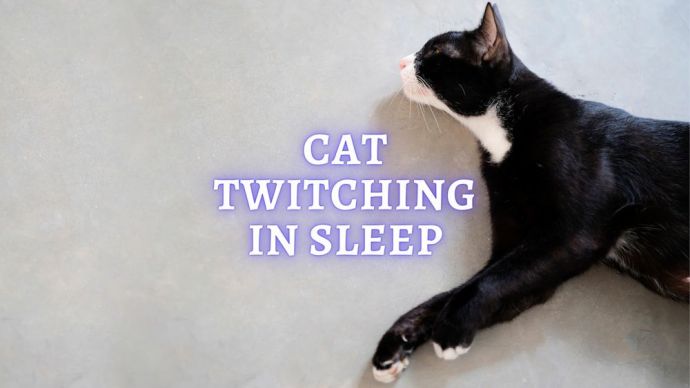 Cat Care Cat Twitching in Sleep: How to Know Cat Twitching in Sleep or Having Seizure
Cat Care Cat Twitching in Sleep: How to Know Cat Twitching in Sleep or Having Seizure - 384
- 0
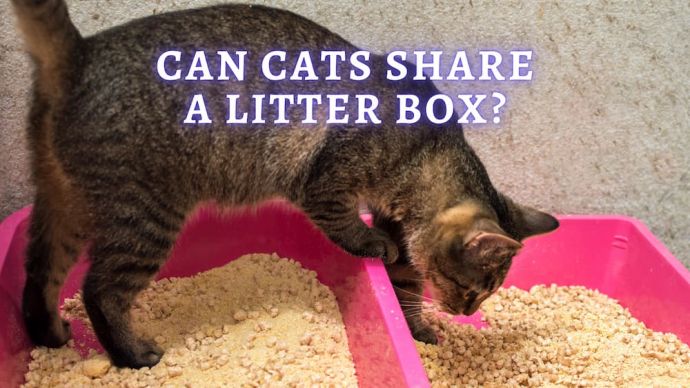 Cat Care Can Cats Share a Litter Box? How Many Boxes Should Be in a Multi-Cat House?
Cat Care Can Cats Share a Litter Box? How Many Boxes Should Be in a Multi-Cat House? - 232
- 1
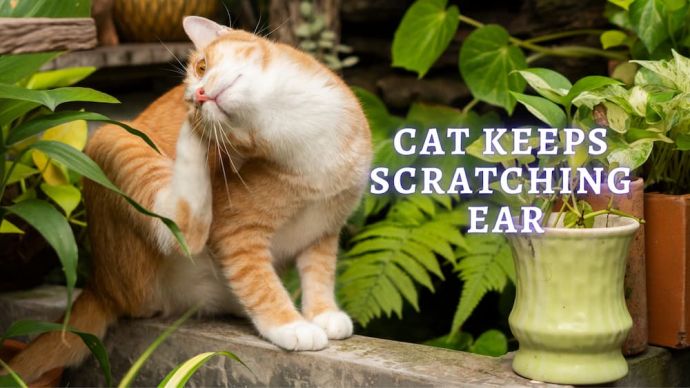 Cat Veterinary Tips Why is my Cat Scratching their Ears? (Veterinary Advice)
Cat Veterinary Tips Why is my Cat Scratching their Ears? (Veterinary Advice) - 1361
- 0
 Cat Care Why Does My Cat Attack My Legs? 10 Reasons Why and What To Do About It (Vet-Approved Advice)
Cat Care Why Does My Cat Attack My Legs? 10 Reasons Why and What To Do About It (Vet-Approved Advice) - 46013
- 21
 Cat Veterinary Tips Cat Stomach Gurgling: Vet Advice on Why is Your Cat Stomach Gurgling?
Cat Veterinary Tips Cat Stomach Gurgling: Vet Advice on Why is Your Cat Stomach Gurgling? - 36469
- 4
 Cat Veterinary Tips My Cat Lost its Voice: Can Cats get Laryngitis? (Vet Advice)
Cat Veterinary Tips My Cat Lost its Voice: Can Cats get Laryngitis? (Vet Advice) - 23554
- 13











